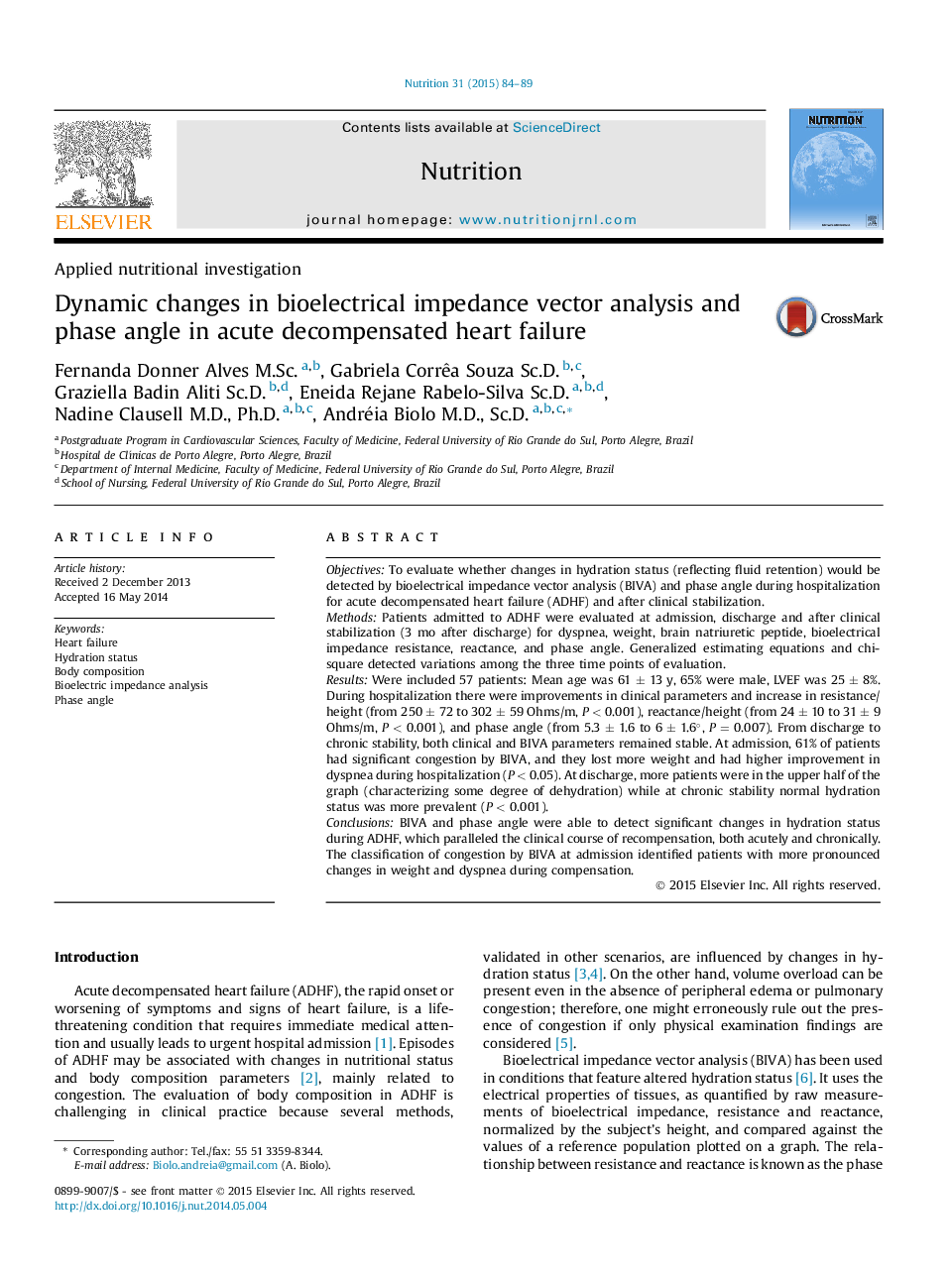| Article ID | Journal | Published Year | Pages | File Type |
|---|---|---|---|---|
| 6089491 | Nutrition | 2015 | 6 Pages |
â¢During hospitalization there were changes in clinical and bioelectrical parametersâ¢From discharge to chronic stability, clinical and BIVA parameters remained stableâ¢BIVA and phase angle detected significant changes in hydration status during ADHFâ¢BIVA identified patients with major changes in weight and dyspnea during compensation
ObjectivesTo evaluate whether changes in hydration status (reflecting fluid retention) would be detected by bioelectrical impedance vector analysis (BIVA) and phase angle during hospitalization for acute decompensated heart failure (ADHF) and after clinical stabilization.MethodsPatients admitted to ADHF were evaluated at admission, discharge and after clinical stabilization (3 mo after discharge) for dyspnea, weight, brain natriuretic peptide, bioelectrical impedance resistance, reactance, and phase angle. Generalized estimating equations and chi-square detected variations among the three time points of evaluation.ResultsWere included 57 patients: Mean age was 61 ± 13 y, 65% were male, LVEF was 25 ± 8%. During hospitalization there were improvements in clinical parameters and increase in resistance/height (from 250 ± 72 to 302 ± 59 Ohms/m, P < 0.001), reactance/height (from 24 ± 10 to 31 ± 9 Ohms/m, P < 0.001), and phase angle (from 5.3 ± 1.6 to 6 ± 1.6°, P = 0.007). From discharge to chronic stability, both clinical and BIVA parameters remained stable. At admission, 61% of patients had significant congestion by BIVA, and they lost more weight and had higher improvement in dyspnea during hospitalization (P < 0.05). At discharge, more patients were in the upper half of the graph (characterizing some degree of dehydration) while at chronic stability normal hydration status was more prevalent (P < 0.001).ConclusionsBIVA and phase angle were able to detect significant changes in hydration status during ADHF, which paralleled the clinical course of recompensation, both acutely and chronically. The classification of congestion by BIVA at admission identified patients with more pronounced changes in weight and dyspnea during compensation.
